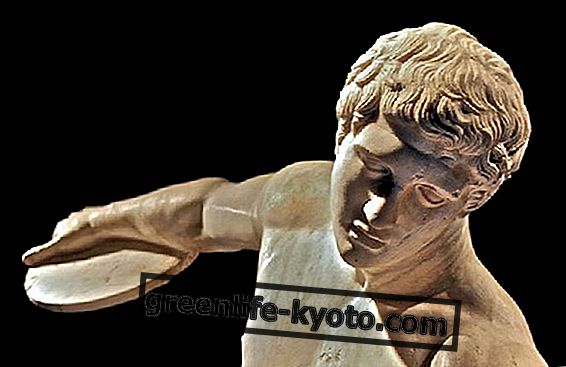Hatha yoga, or yoga of strength, acts on the physical plane, brings benefit to the spine and improves elasticity . Let's find out better.

Meaning of Hatha yoga
Hatha yoga can be translated as effort yoga / strength yoga . Both meanings refer to the difficulty of the positions practiced in it. According to another interpretation the word Hatha derives from the union of Ha - Sole and Tha - Luna, which would symbolize the need to unite polarities to transcend them in the One.
Origins and philosophy of Hatha yoga
Hata yoga is the most popular current in yoga, probably because it is the one that best fits the structure and psycho-physical needs of westerners. Together with Kundalini, Raja, Laya and Mantra yoga it is part of the current of tantric yoga, or of the current that uses the senses to reach inner realization.
The origins of Hata yoga date back to the drafting of the first Tantra - the classical texts of Hindu thought in which the practices and rules of conduct to reach liberation are included - but its real systematization is due to the mystic Gorakhnath, lived among the 11th and 12th centuries, founder of a yoga centered mainly on psycho-physical practices .
In his texts it is theorized that through the rigid discipline - sadhana - aimed at the control of the body and the control of the mind, the fusion between the individual self and the universal self, the ultimate goal of yoga, can be stimulated.
What is dynamic yoga, the form of Hata yoga, based on postures or asanas

Practice
The discipline proposed by Hatha yoga goes through a series of physical exercises ( asanas ) respirators ( Pranayama ) and meditation techniques . The centrality is however placed on the physical exercise, on the asanas, which in this type of yoga are particularly difficult and need an extra effort to be realized.
Indeed, the idea of Hatha yoga is precisely that, through the effort required to impose extreme movements on the body or on the limit of the body's capacity, man can go beyond his own limits and reach the state of fusion with the absolute.
At the same time, the search for calm and relaxation even in objectively complex positions, would offer the most fertile ground for the development of those qualities latent in the human being that can lead to its full development.
Often in schools of Hatha yoga of more recent formation this vision has been revised to adapt it to the needs of Western man, and many positions, the most extreme, are no longer taught.
In some schools static positions are preferred, in other dynamic cycles of movements; in the most recent ones a mixture of both. In all schools the support of breathing during movement - or the static nature of the position - is fundamental to reach the level of awareness and control necessary for the practice to take effect beyond the purely physical level .
The benefits of Hatha yoga
Hatha yoga is yoga that more than any other acts on a physical plane, giving a beneficial effect compared to the looseness of the vertebral column and (excellent for preventing and treating back pain, neck pain or for anyone with scoliosis problems ).
It improves the elasticity of muscles and tendons, the control and the ability to listen to the body in general. At the same time, the attention dedicated to breathing contributes to giving the body greater vigor and a better general state of health.
Hatha yoga in particular has the merit of reawakening diaphragmatic breathing, forgotten and little practiced by the great majority of people, due to the stressful rhythms of work and the frenetic life that modern man leads.
Find out how to get the right energy along the spine with yoga
In addition to more purely physical benefits, Hatha yoga also has a positive influence on the psychic level, favoring profound states of relaxation and concentration . Jumping over the physical plane, the exercises and asanas of Hatha yoga work at the level of subtle energies to unblock those energy stagnations that are the basis of the main physical and mental illnesses, working above all in the preventive phase. Important benefits are obtained, for example, in cases of depression, insomnia, anxiety, panic attacks etc.
Furthermore, according to the complex system of energy physiology developed by the Hindu tradition, the assumption of the positions taught by Hatha yoga would also influence the well-being of the internal organs of the body, the regulation of the endocrine glands and the nervous system, thus contributing to create the premises for a total psycho-physical health.
Masters and schools
Svatmarama
Historical character . Disciple of Gorakhnath who lived in the fifteenth century, he is a forefather to whom all the modern masters of Hatha yoga refer, drawing from his Hatha Yoga Pradipika ( The Lamp for Hatha Yoga ).
Sivananda
Contemporary master . Indian master born in 1887, after having practiced for a long time the profession of doctor - with which he earned a reputation as a professional with profound humanity - he began his spiritual quest that led him to the feet of the Himalayas, in the city of Rishikesh, where he met his Guru and thus begins his life as a Sannyasin . Although he rarely moved from Rishikesh, his teachings went around the world, thanks also to his disciple Devananda to whom he entrusted the task of bringing yoga to the West . Today in Rishikesh there is the headquarters of the Divine Life Society, which is an inspiration for many yoga centers around the world.
Satyananda
Contemporary master . A direct disciple of Swami Sivananda, Satyananda meets his Guru at the age of 19 and since then he has dedicated himself body and soul to spiritual growth. After 12 years in Rishikesh Satyananda embarks on a long journey through India, Afghanistan, Burna, Nepal and Cylon. In 1968 he settled in Bihar (India) where he founded the International Yoga Fellowship movement and the Bihar School of Yoga.
Today the teachings and the method developed by Satyananda are followed throughout the world and his disciples continue the work he has undertaken.
Curiosity about Hatha yoga
Due to the growing number of new styles and schools born since yoga entered the West, the Indian government set up a government agency 5 years ago to " patent" yoga . This body has the task of recording every single yoga position of each style or school, in order to show that Westerners, who seem to churn out new styles as if it were raining, have not invented anything new.













